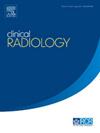预防不必要的转诊偶发乳腺病变检测的横断成像:回顾性研究的局部转诊途径。
IF 1.9
3区 医学
Q2 RADIOLOGY, NUCLEAR MEDICINE & MEDICAL IMAGING
引用次数: 0
摘要
目的:越来越多的使用横断成像导致更多的检测偶然的乳房病变。对于如何跟进这些发现,目前还没有指导方针。在实施我们的路径之前,当地的做法是普通放射科医生将偶然发现的乳房转诊到有症状的乳房诊所或乳房多学科小组会议(MDT)。这种转诊途径允许普通放射科医生将偶然乳房发现的患者转诊给乳腺放射科医生(通过在报告中添加JBREAS代码),后者可以审查成像。乳房放射科医生可以决定是否有症状的临床转诊是合适的,并通过原始报告的附录进行沟通。这项研究的目的是回顾2015年至2024年间使用JBREAS代码的扫描,以评估该系统是否有效地避免不必要的转诊。材料和方法:回顾性回顾2015年11月27日至2024年6月22日JBREAS码扫描结果。使用计算机化放射学信息系统(CRIS)和综合临床环境(ICE)对患者、扫描细节和组织学结果进行了患者数据分析。结果:在总共736次扫描中,344例患者被推荐到乳腺诊所转诊。其中73例为恶性组织学。结论:数据显示,我们的途径减少了超过50%的转诊。这大大减轻了人满为患的乳腺诊所的负担。对患者的好处包括减少不必要的焦虑和去医院,从而减少旅行成本和对环境的影响。此外,该途径能够快速评估随后被发现为恶性的偶然乳腺病变(占JBREAS转诊总数的10%)。本文章由计算机程序翻译,如有差异,请以英文原文为准。
Preventing unnecessary referrals for incidental breast lesions detected on cross-sectional imaging: a retrospective study of the local referral pathway
AIM
Increased use of cross-sectional imaging has resulted in greater detection of incidental breast lesions. There are no guidelines for how these findings should be followed up. Prior to the implementation of our pathway, local practice was for general radiologists to refer incidental breast findings either to a symptomatic breast clinic or to breast Multi disciplinary team meeting (MDT). This referral pathway allows general radiologists to refer patients with incidental breast findings to a breast radiologist (by adding a JBREAS code in the report) who can then review the imaging. The breast radiologist can then decide whether symptomatic clinic referral is appropriate and communicate this via an addendum to the original report. The aim of this study was to review scans with a JBREAS code between 2015 and 2024 to assess whether the system is effective in avoiding unnecessary referrals.
MATERIALS AND METHODS
retrospective review of scans with JBREAS code between 27/11/2015 and 22/06/2024 was conducted. An analysis of patient data using Computerised Radiology Information System (CRIS) and Integrated Clinical Environment (ICE) for patient and scan details and histology results was performed.
RESULTS
Out of a total of 736 scans, 344 patients were recommended for breast clinic referral. Seventy-three of those referred to clinic had malignant histology.
CONCLUSION
The data show that our pathway reduced referrals by over 50%. This significantly reduced the burden on oversubscribed breast clinics. Advantages to patients include saving unnecessary anxiety and trips to the hospital, thereby reducing travel costs and environmental impact. Furthermore, the pathway enabled rapid assessment of incidental breast lesions that were subsequently found to be malignant in nature (10% of total JBREAS referrals).
求助全文
通过发布文献求助,成功后即可免费获取论文全文。
去求助
来源期刊

Clinical radiology
医学-核医学
CiteScore
4.70
自引率
3.80%
发文量
528
审稿时长
76 days
期刊介绍:
Clinical Radiology is published by Elsevier on behalf of The Royal College of Radiologists. Clinical Radiology is an International Journal bringing you original research, editorials and review articles on all aspects of diagnostic imaging, including:
• Computed tomography
• Magnetic resonance imaging
• Ultrasonography
• Digital radiology
• Interventional radiology
• Radiography
• Nuclear medicine
Papers on radiological protection, quality assurance, audit in radiology and matters relating to radiological training and education are also included. In addition, each issue contains correspondence, book reviews and notices of forthcoming events.
 求助内容:
求助内容: 应助结果提醒方式:
应助结果提醒方式:


